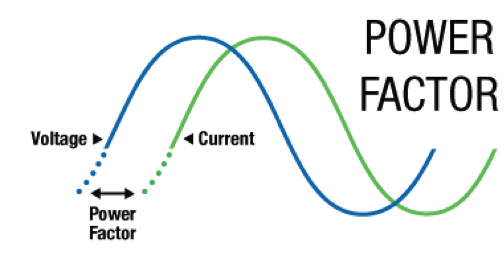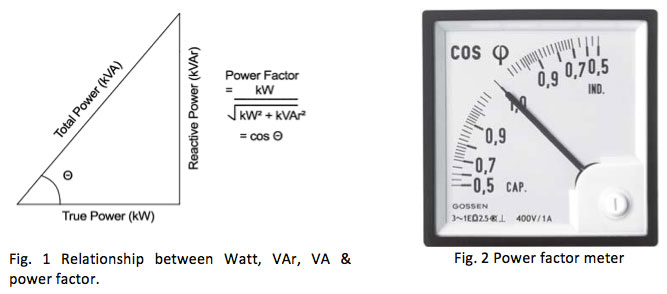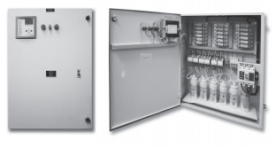Power Factor

We provide the information on power factor, its impacts and methods to manage low power factor condition.
Low power factor conditions have two negative impacts - technical and commercial.
What is Power Factor
Power factor is the ratio between the real power (kW) and the apparent power (kVA) drawn by an electrical load.
It is a measure of how effectively the electrical current is being converted into useful work output and more particularly is a good indicator of the effect of the load current on the efficiency of the electrical supply system.
The relationship between real power (Watt), reactive power (VAr), apparent power (VA) and power factor is shown in Figure 1. Power factor is also defined as cos Ф. A typical power factor meter is shown in Figure 2.

The Power Factor value range is 1.0 to 1.0. 1.0 means real power without any reactive power. 0.0 means there is no real power consumption, only reactive power. Power Factor can be either in inductive (IND) or capacitive (CAP) conditions.
Impacts of low Power Factor
The lower the Power Factor on a line, the higher the current that flows through it. Below are a few technical disadvantages of that:
- Higher current results in a greater voltage drop on the line, especially if the cable is marginally sized or very long. This results in an energy loss due to heat dissipation (I2R).
- The higher current can push equipment closer to their rated capacities. Cables are rated based on their current carrying capacity. Transformers and generators are rated by VA (Volt-Amps) which is current carrying capacity at a certain voltage.
Commercially, commercial and industrial customers with low average power factors will be imposed power factor penalties.
For customers taking supply at 33 kV or below, the value of the power factor must be maintained ≥ 0.85. Power factor < 0.85 will result in a power factor penalty being imposed to the customer.
For customers taking supply at 132 kV or above, the value of the power factor must be maintained ≥ 0.90. Power factor < 0.90 will result in a power factor penalty being imposed to the customer.
Steps to improve low Power Factor

Generally, low power factor conditions can be resolved by these devices.
- Capacitors are the largest source of compensating reactive power and are commonly used throughout the power system.
- Synchronous condensers are a type of rotating machine—like a generator—but they do not produce real power, only reactive power. There are also other devices that use high-power electronics to rapidly control reactive power from large banks of capacitors.
-
Conventional generators, in addition to supplying real power, are an important source of reactive power.
Fig. 3. Comparison between reactive power flow before and after compensation with a capacitor
Other steps to improve low power factor are:
- Avoid operating motor-based electrical appliances without load or below the load recommended by manufacturers.
- Use motor-based electrical appliances with a high Power Factor
- Use motor-based electrical appliances that are SIRIM-certified and have energy efficient labels
You may also download our print advertorials. Available here in English, BM and Chinese version:






